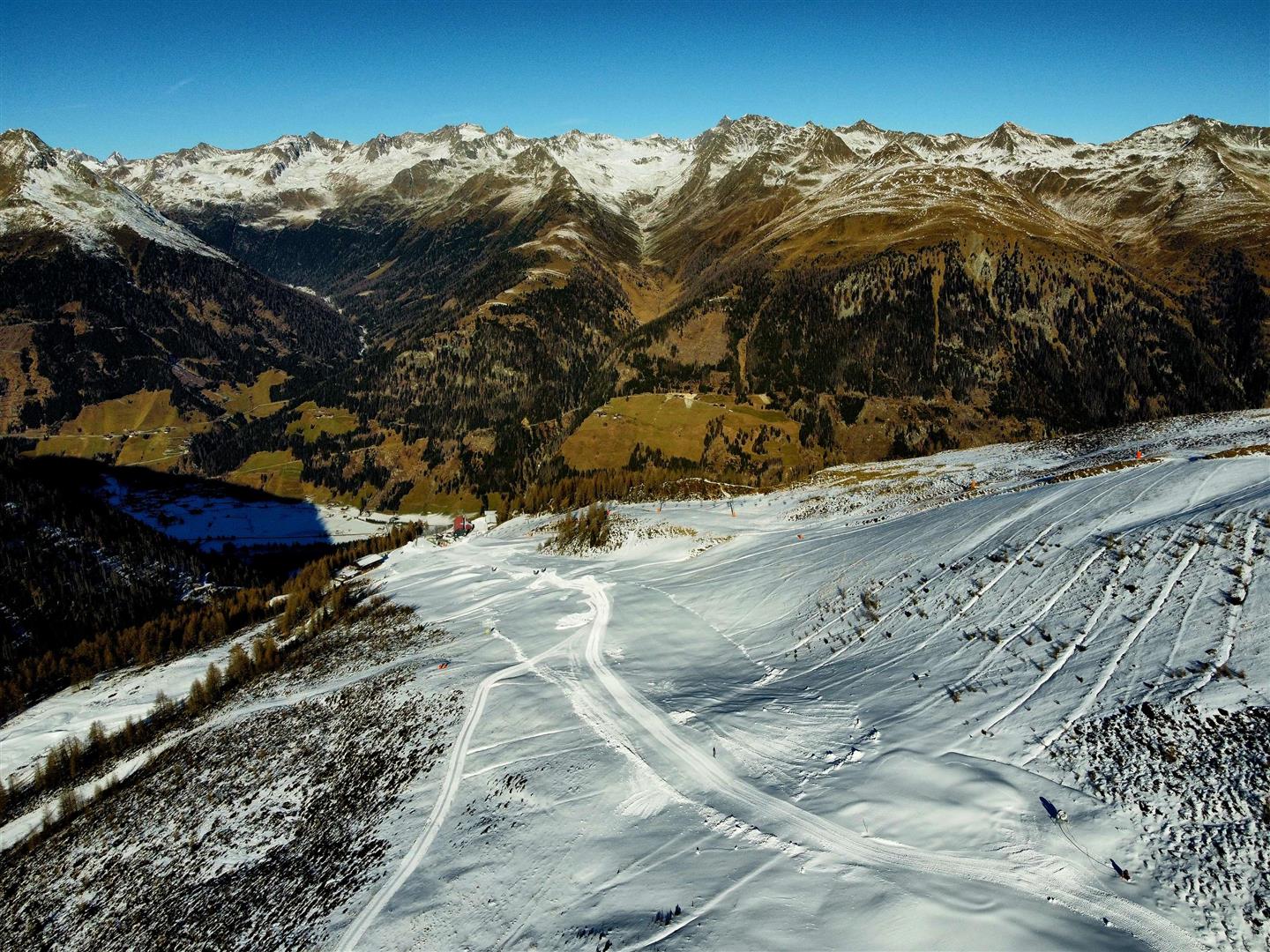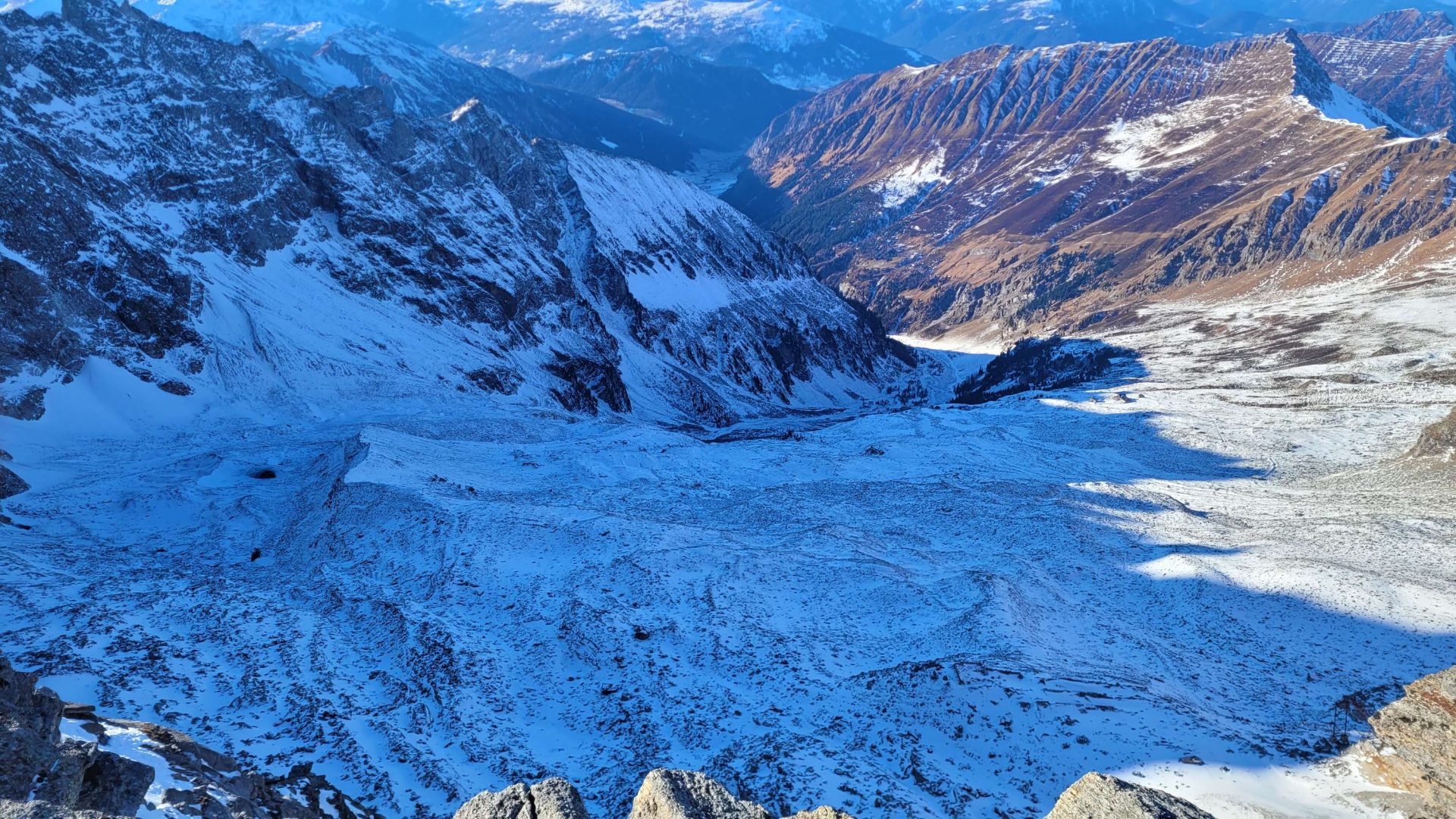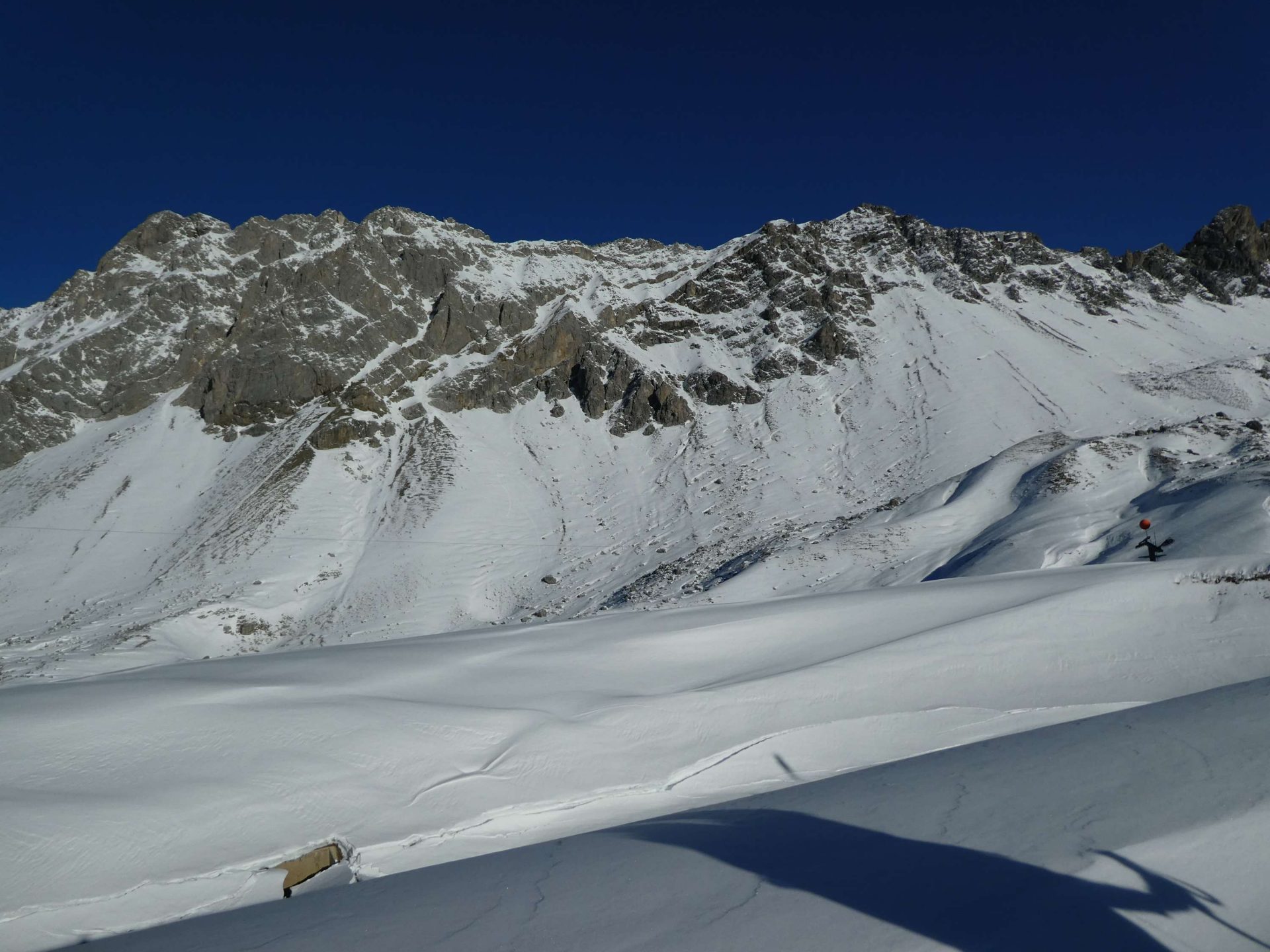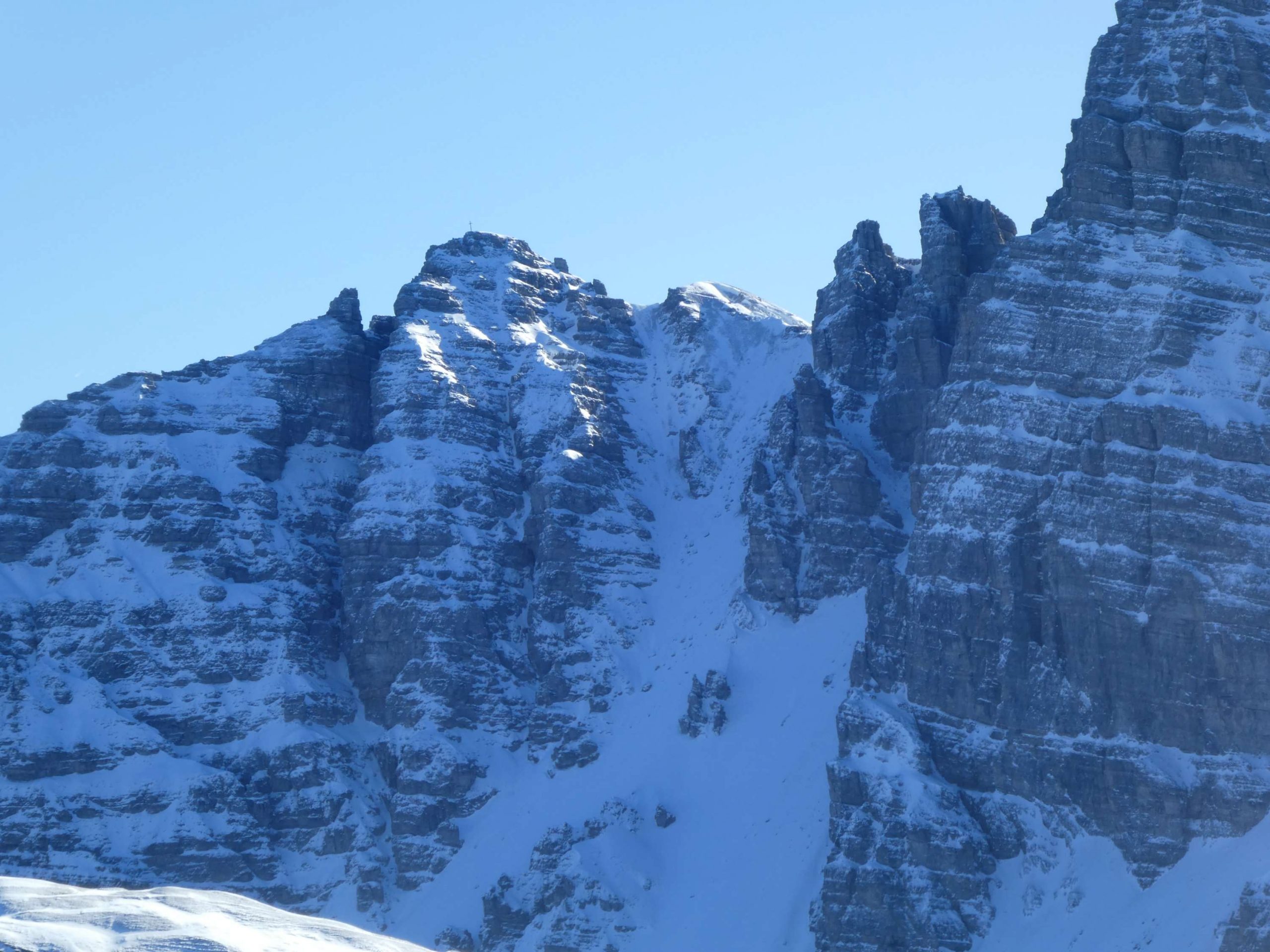A warm front and on its heels a cold front are bringing precipitation to the mountains. Despite an irregular snow cover, avalanche danger in outlying terrain should not be underestimated. Tomorrow, 7 December 2024, we are launching the daily publication of Avalanche Bulletins.
Turbulent weather & uncertain snowfall forecast for Sunday, 08.12.2024
Tomorrow, Friday, 06.12.2024, a warm front will whisk rapidly through Tirol. Initially it may rain up to 2000m in the northern regions before the snowfall level descends. In the heights, 5-15 cm of fresh snow is anticipated. In the mountains it will be stormy from place to place. Winds will be mostly westerly. Saturday, 07.12.2024 will be dry to begin with. Brisk winds will shift to southwesterly. During the course of the day a cold front will bring snowfall. The forecasts of expected amounts of fresh snow are still uncertain due to the complexity of the weather situation: still hard to estimate, according to GeoSphere Austria.
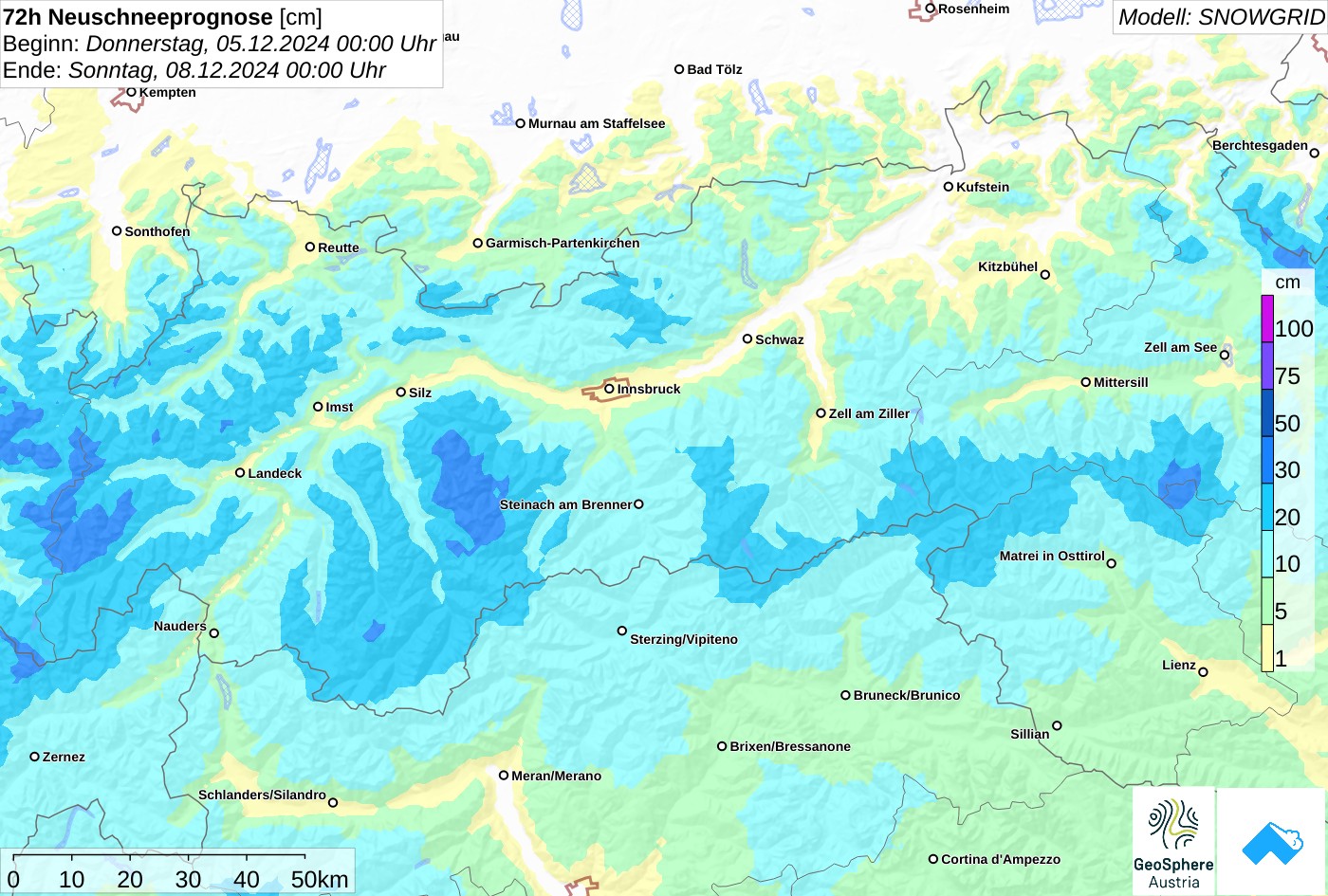
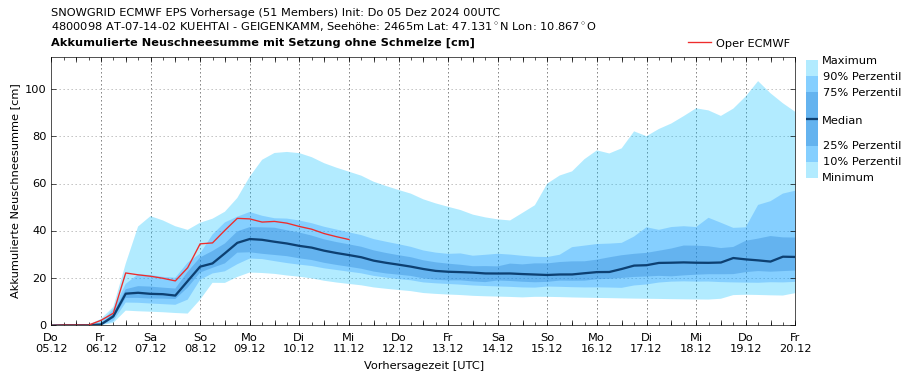
Effect on avalanche danger
To start with: snowdrift problem
One thing is clear: avalanche danger will rise successively over the next few days. Tomorrow, 06.12.2024, fresh snowdrifts will accumulate at high altitudes and these masses will play a major part in the development. Not just because of the strong-to-stormy winds, but also due to rising temperatures, this will be well-bonded snowdrifts or “slab snow.” A complete slab formation requires a weak layer in order to trigger the slab in steep terrain. Possible, already well formed weak layers are currently found in some snow profiles, e.g. as expansively metamorphosed layers of faceted crystals, both on the surface and more deeply embedded in the snowpack.
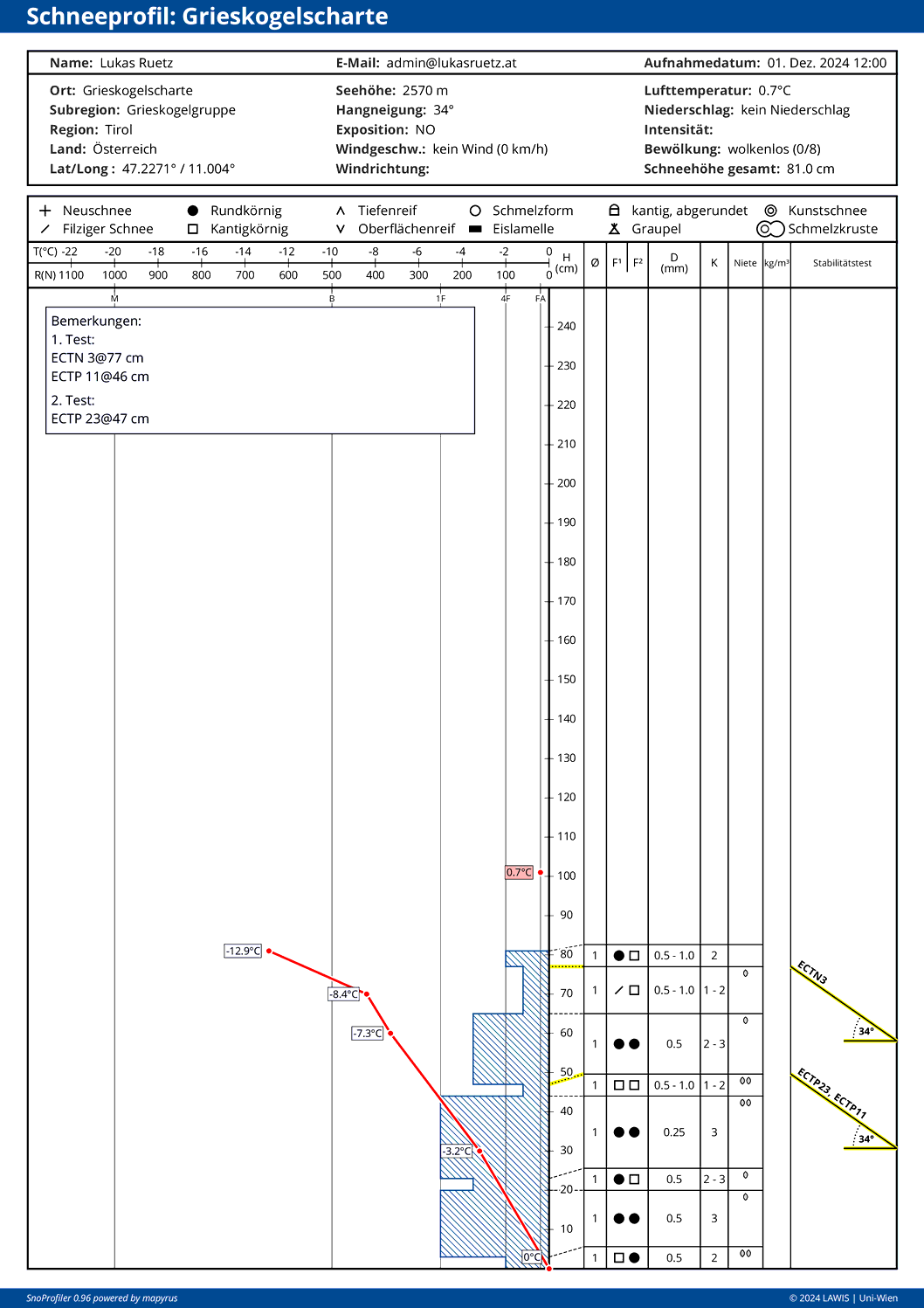
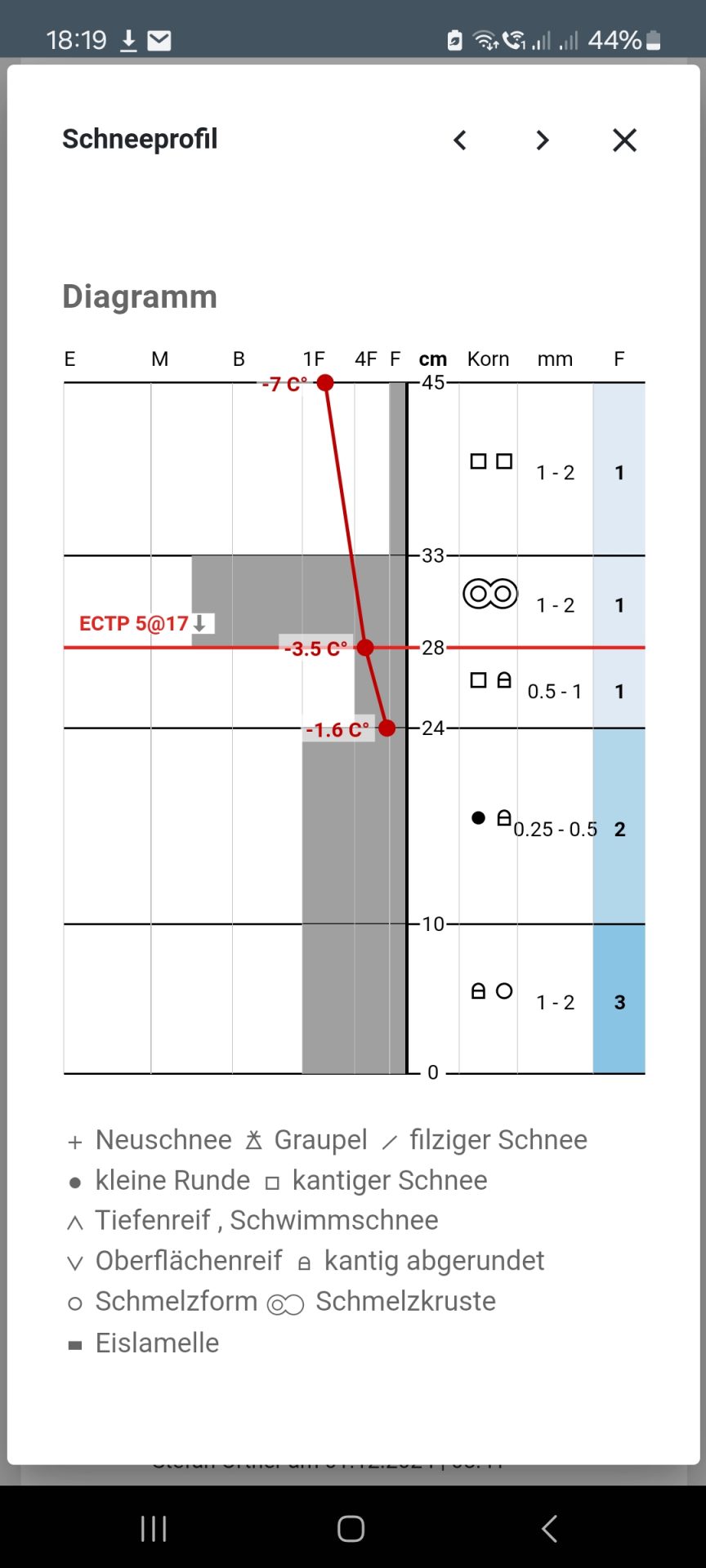
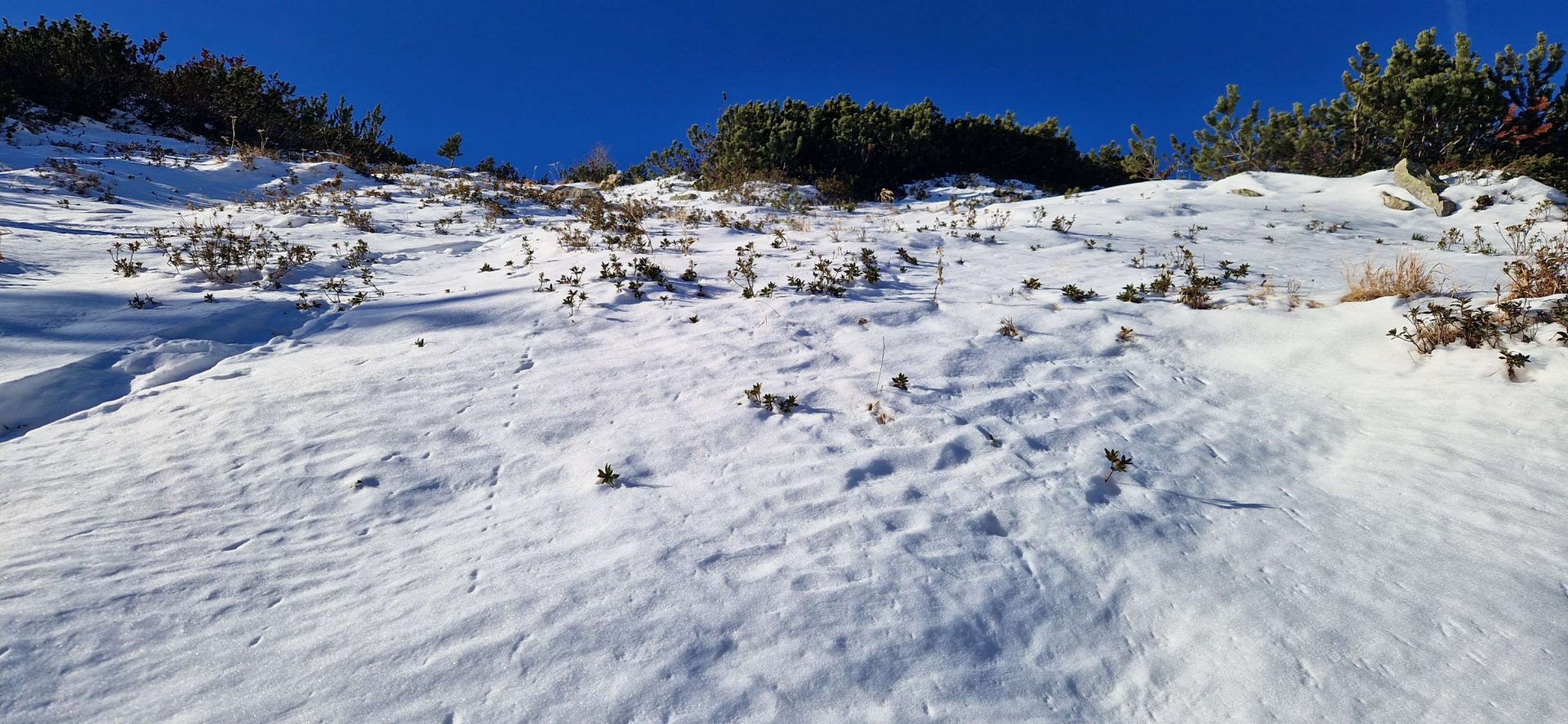
At the same time, surface hoar was also observed in some regions last week, especially in eastern regions of North Tirol on north-facing slopes at 1500-2300m altitude. This surface hoar will probably persist only from place to place in wind-protected shady zones above the rainfall level, due to the warm front approaching on 06.12.

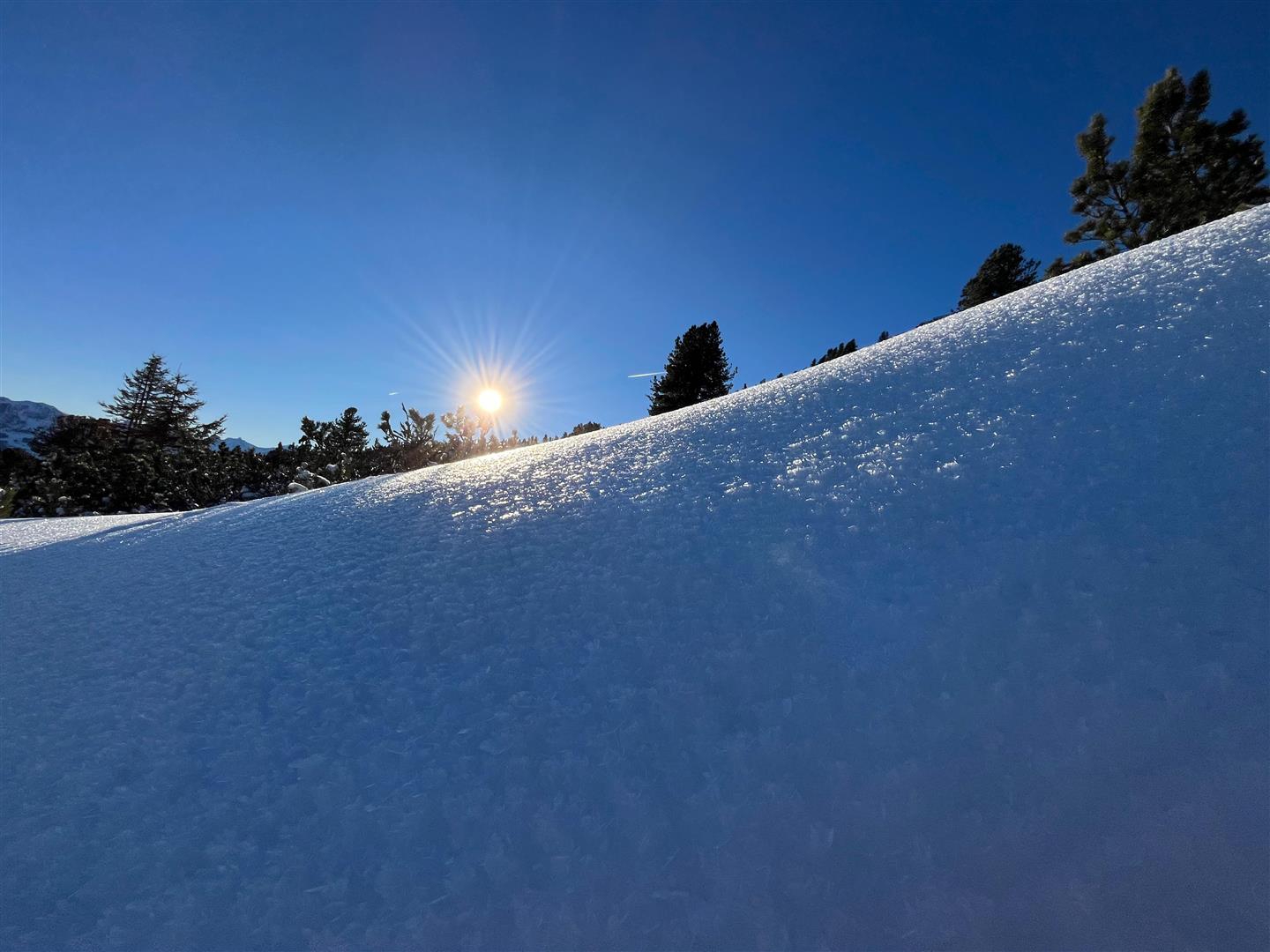
In high alpine terrain the snowpack is highly irregular: a mostly solid base from the autumnal snowfall with several soft layers near the surface. On shady slopes the snowpack tends to be softer and more faceted.
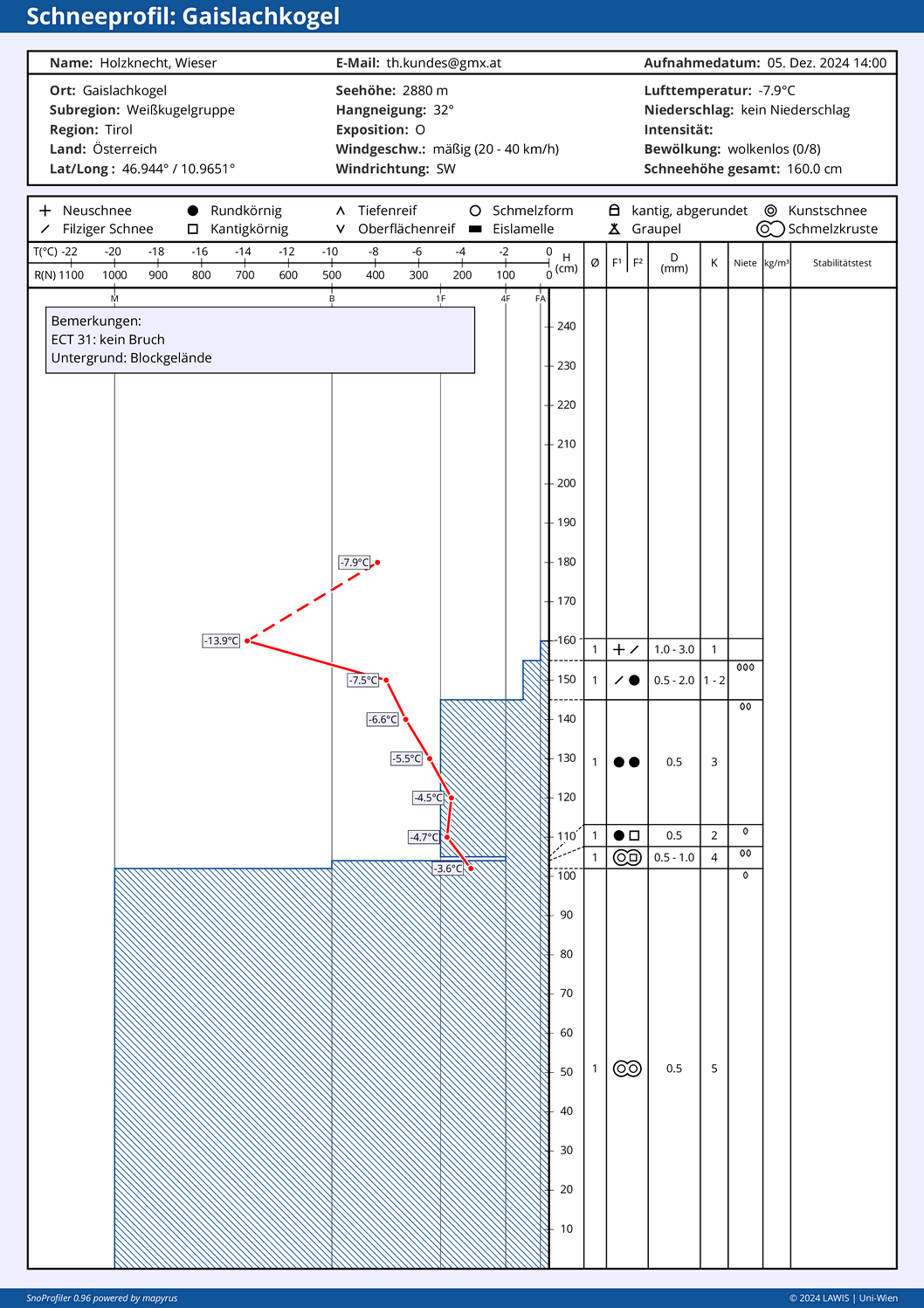
Currently the snow depths are below average for this juncture of the season. There is a cohesive, area-wide snowpack only at very high altitudes. Nonetheless, the snowpack is highly prone to triggering in some places. Most endangered are steep NW-N-E facing slopes. The danger zones tend to increase with ascending altitude.
Starting on Sunday in areas of major precipitation: gliding snow problem
Below 2400m, we expect increasingly frequent glide-snow slides and glide-snow avalanches on steep grass-covered slopes starting on Sunday. In zones where there was initially more rainfall, the glide-snow avalanche activity will be greater.
A look back…
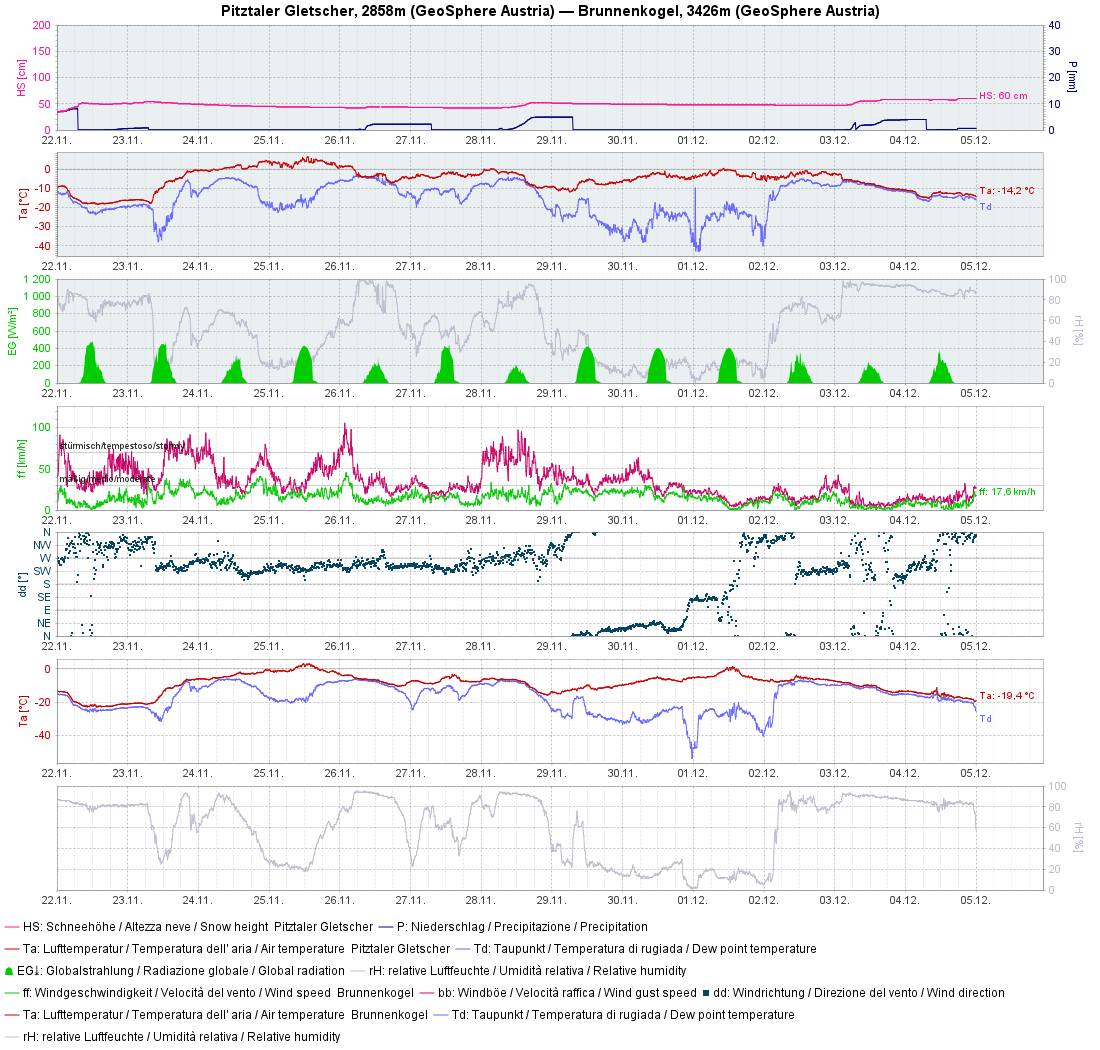
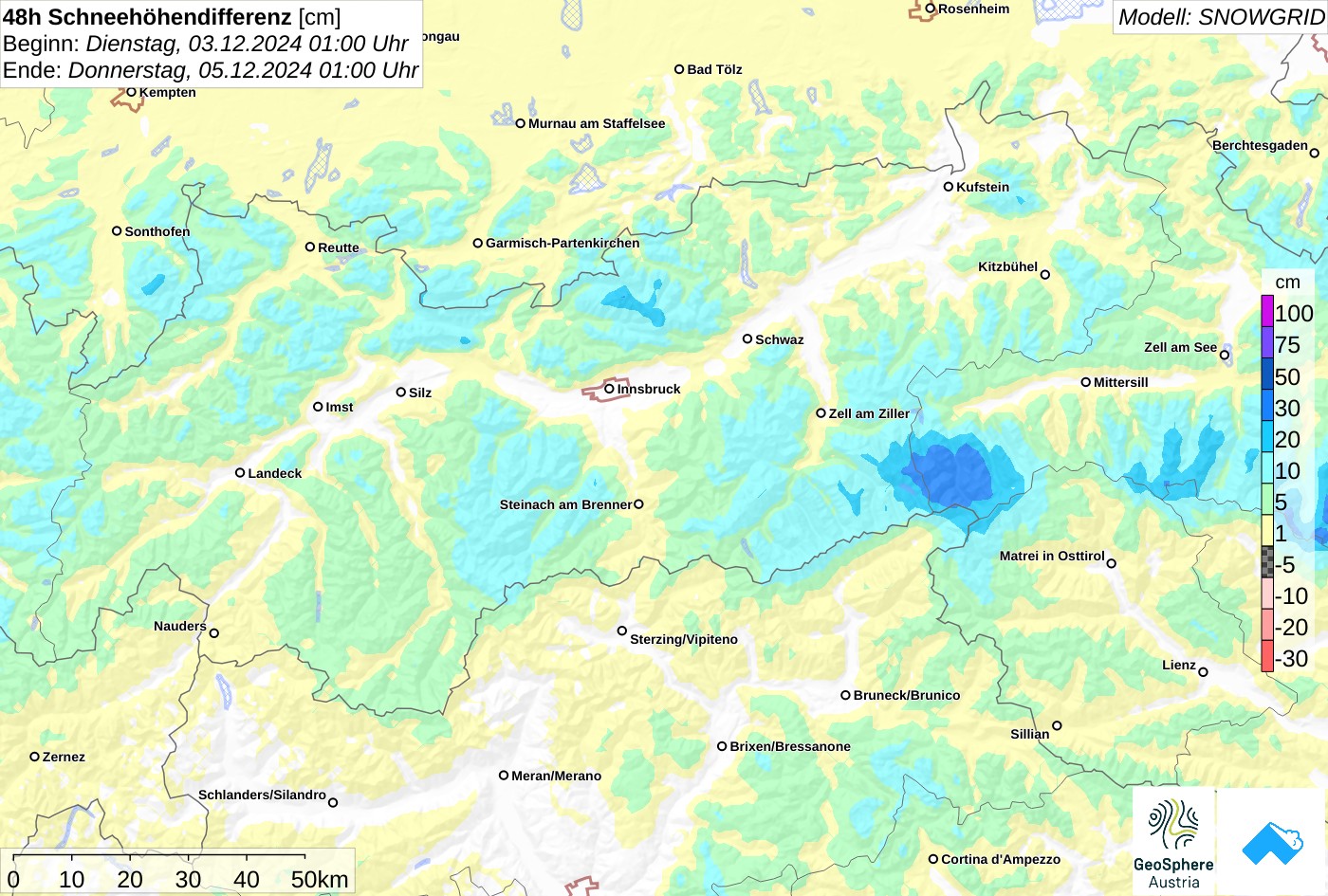
Already some avalanches, despite lack of snow
We have already received reports of avalanche triggerings. What was striking: not only the shallowness of fractures due to lack of snow, but the high proneness to triggering of the snowpack.
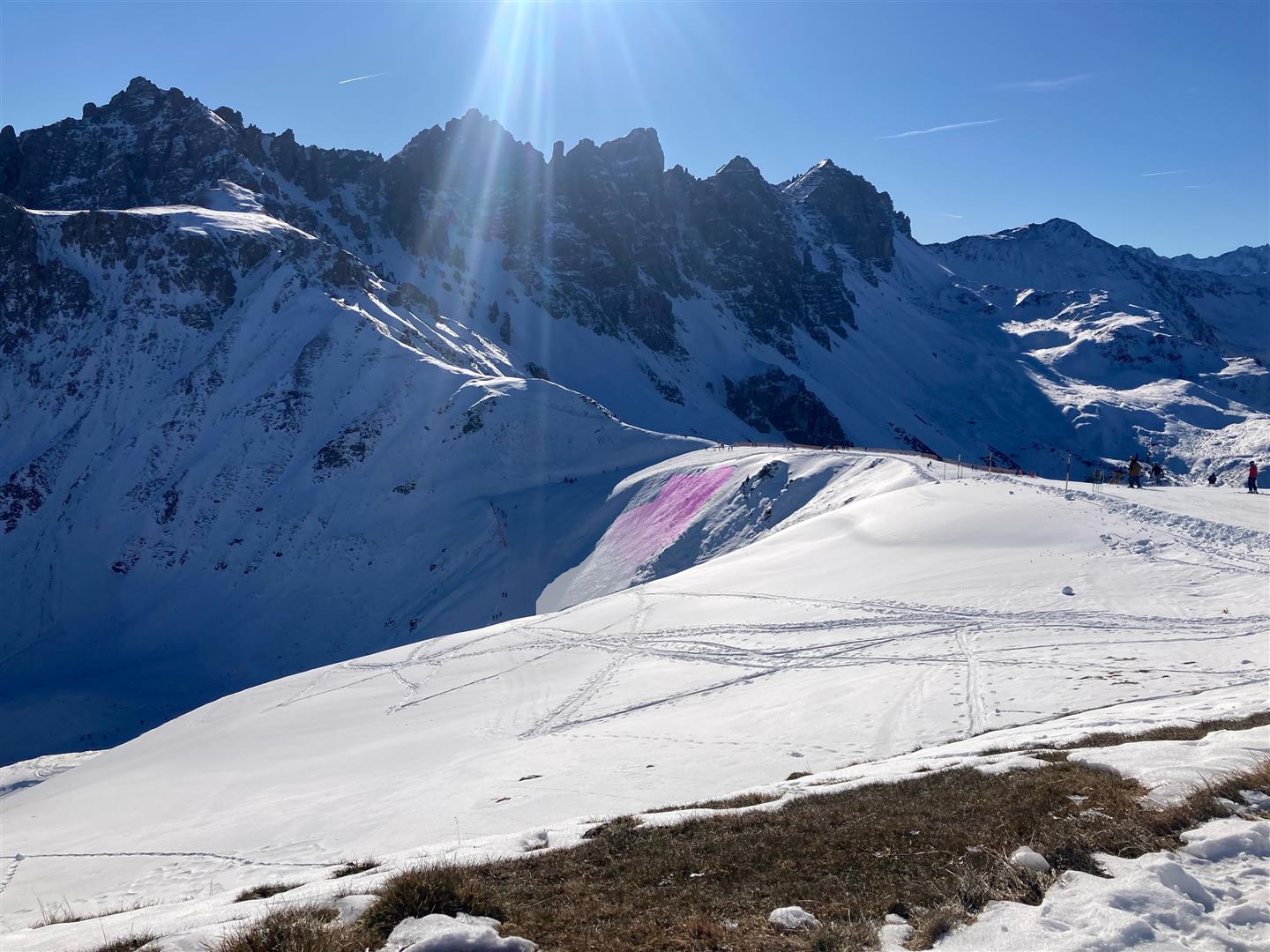
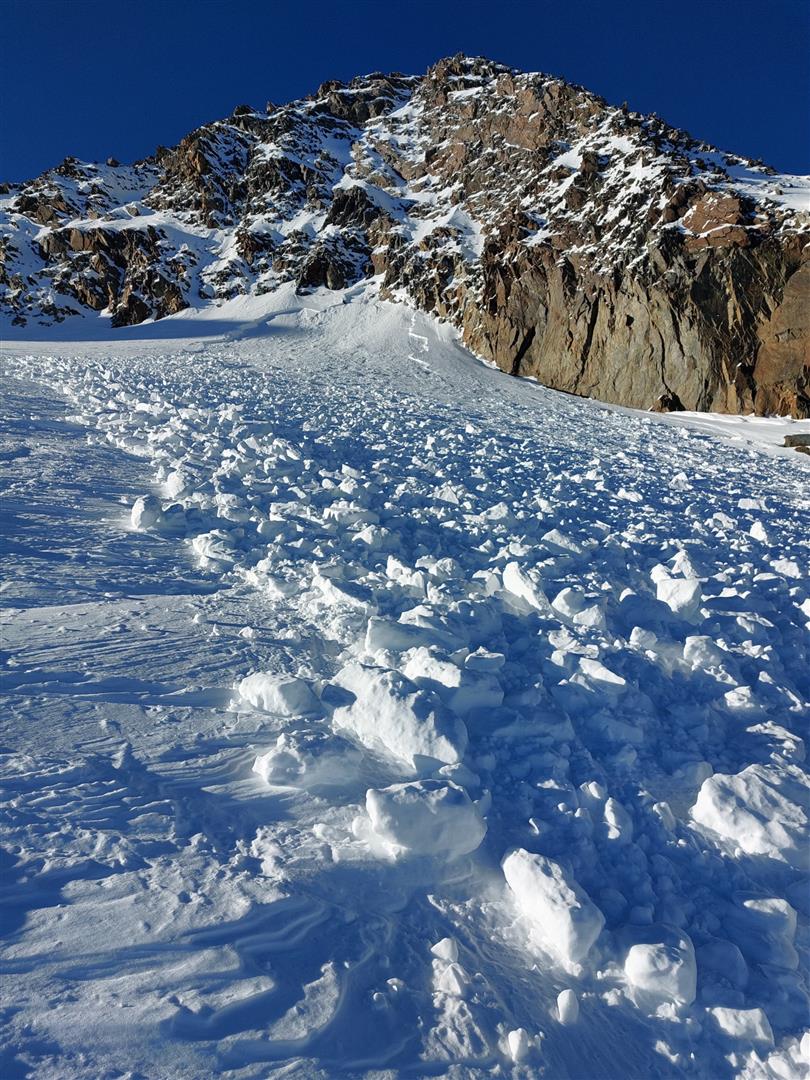
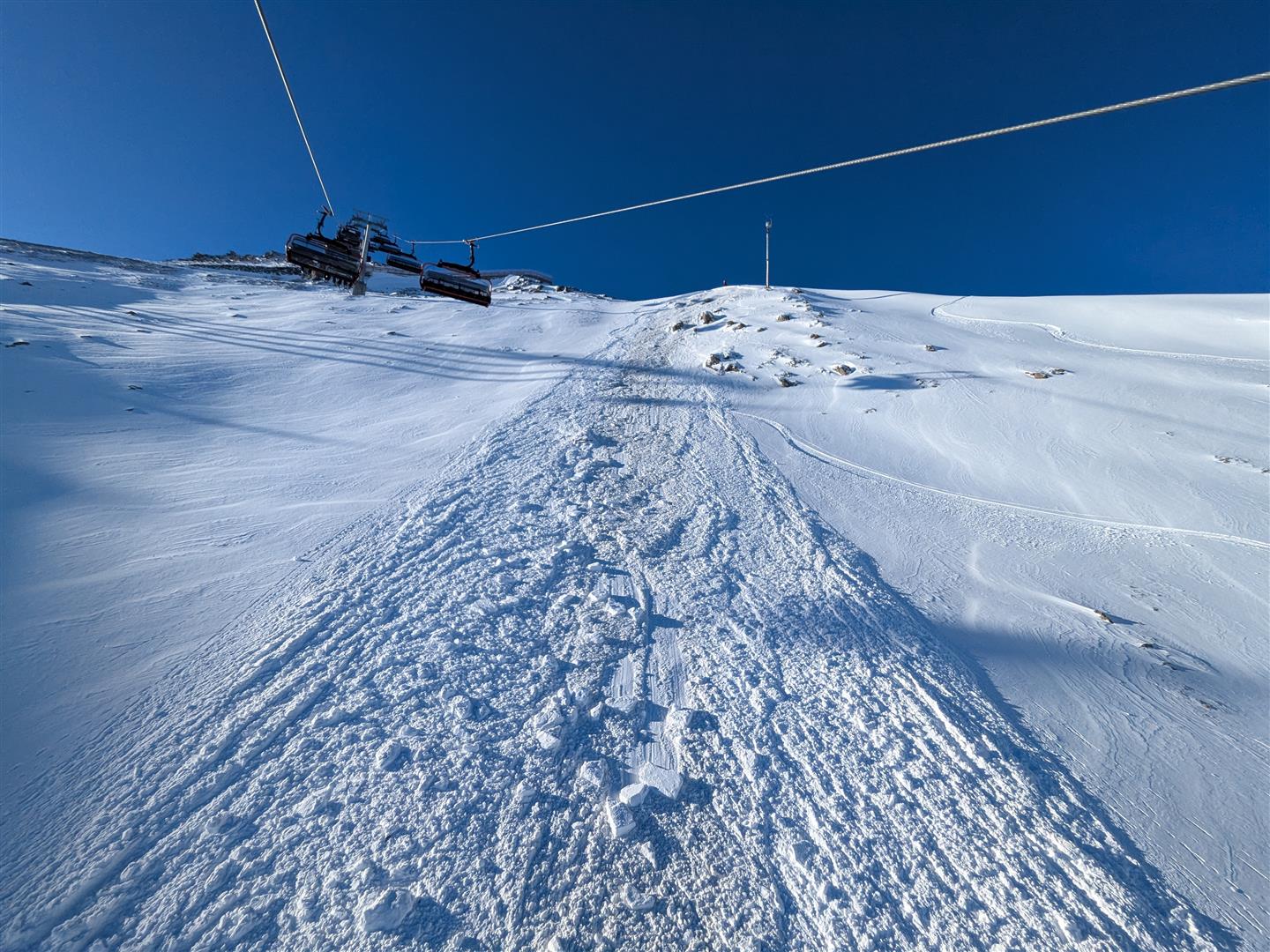
In backcountry, still not enough snow for winter sports
